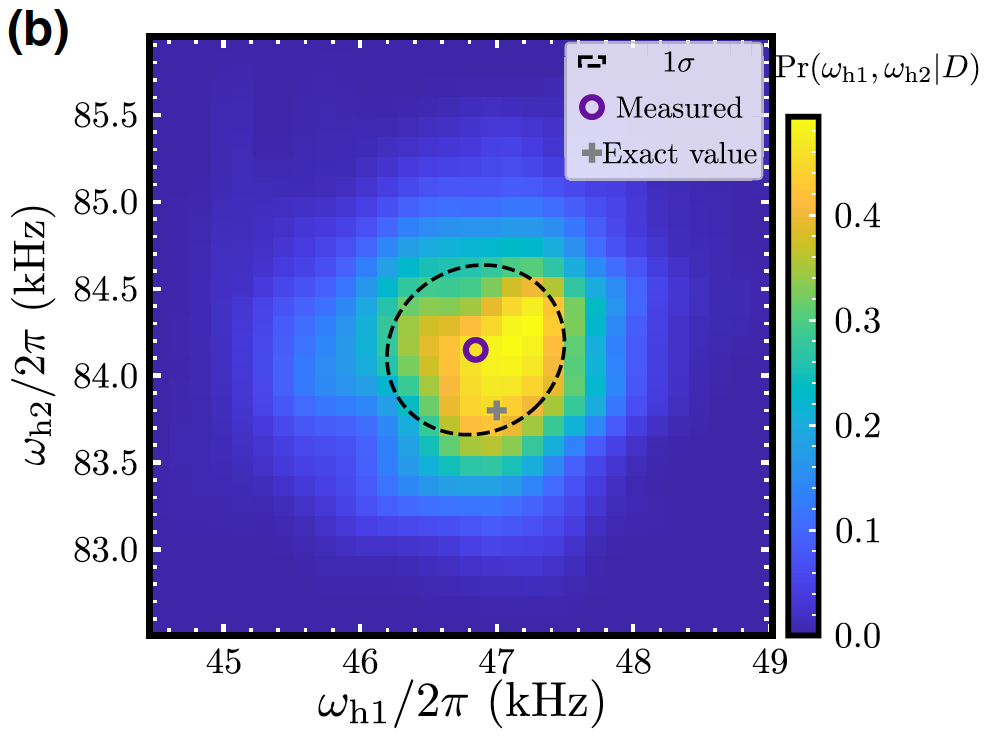
Jingcheng Wang, Dongxiao Li, Ralf Betzholz, and Jianming Cai
Quantum sensing is considered to be one of the most promising subfields of quantum information to deliver practical quantum advantages in real-world applications. Its impressive capabilities are often hindered by the limited quantum resources available. We incorporate the expected information gain (EIG) and techniques such as accelerated computation into Bayesian experimental design (BED) in order to use quantum resources more efficiently. A simulated nitrogen- vacancy center in diamond is used to demonstrate real-time operation of the BED. Instead of heuristics, the EIG is used to choose optimal control parameters in real time. Moreover, combining the BED with accelerated computation and asynchronous operations, we find that up to a tenfold speedup in absolute time cost can be achieved in sensing multiple surrounding 13C nuclear spins.
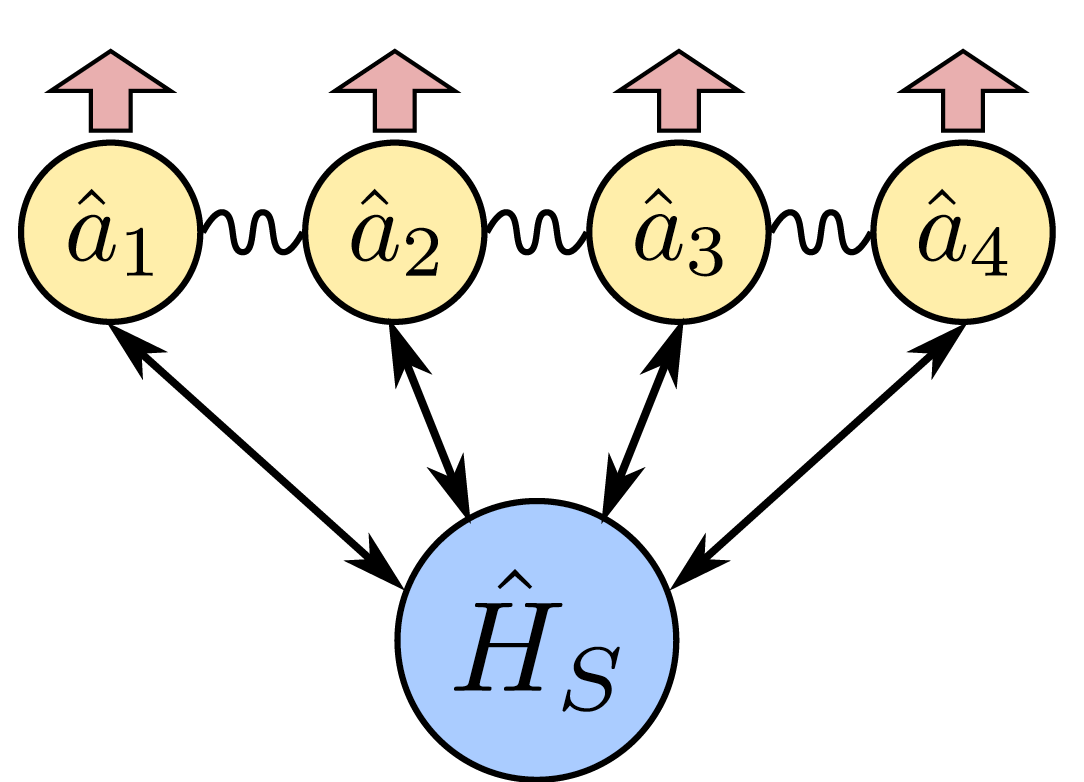
Simon B. Jäger, Tom Schmit, Giovanna Morigi, Murray J. Holland, and Ralf Betzholz
We present a general approach to derive Lindblad master equations for a subsystem whose dynamics is coupled to dissipative bosonic modes. The derivation relies on a transformation which allows us to eliminate the bosonic degrees of freedom after self-consistently determining their state as a function of the coupled quantum system. We apply this formalism to the dissipative Dicke model and derive a Lindblad master equation for the atomic spins, which includes the coherent and dissipative interactions mediated by the bosonic mode. This master equation accurately predicts the Dicke phase transition and gives the correct steady state. In addition, we compare the dynamics using exact diagonalization and numerical integration of the master equation with the predictions of semiclassical trajectories.
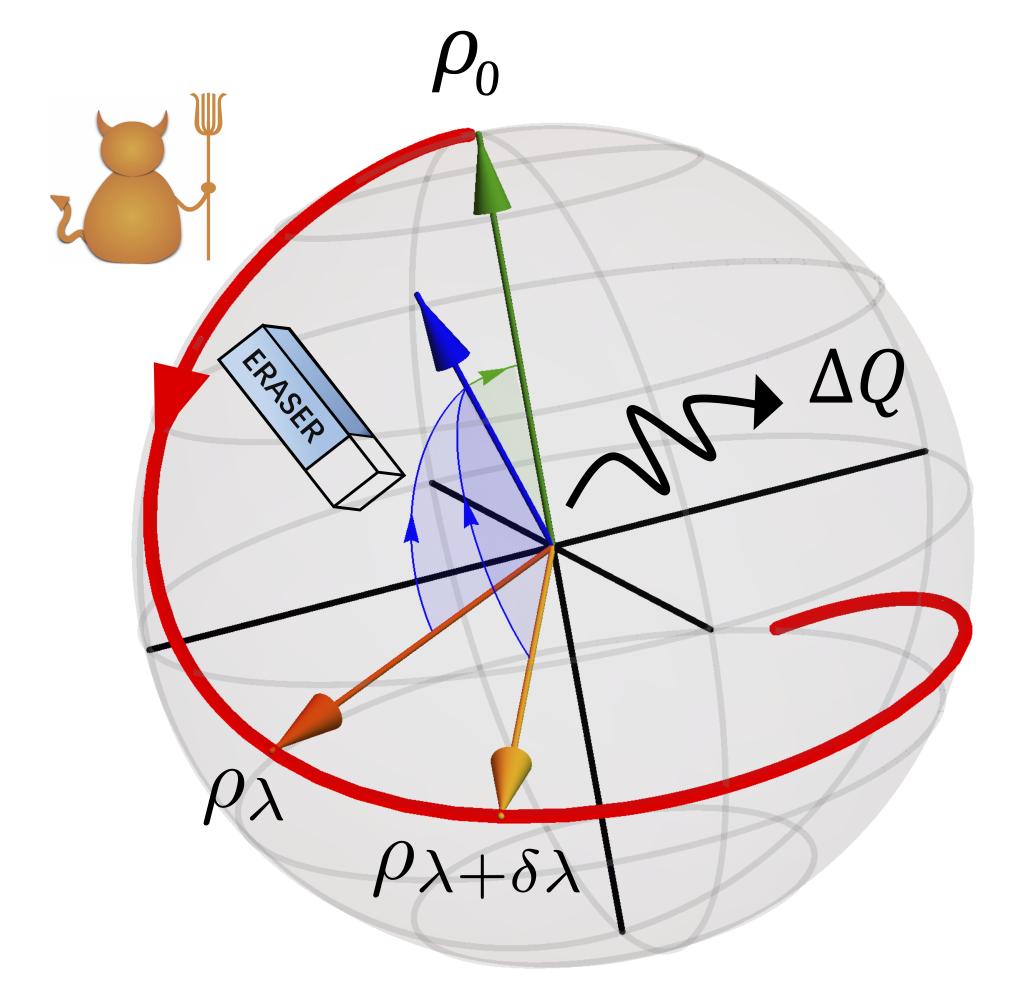
Yaoming Chu and Jianming Cai
The heat dissipation in quantum metrology represents not only an unavoidable problem towards practical applications of quantum sensing devices but also a fundamental relationship between thermodynamics and quantum metrology. However, a general thermodynamic principle which governs the rule of energy consumption in quantum metrology, similar to Landauer’s principle for heat dissipation in computations, has remained elusive. Here, we establish such a physical principle for energy consumption in order to achieve a certain level of measurement precision in quantum metrology, and show that it is intrinsically determined by the erasure of quantum Fisher information. The principle provides a powerful tool to investigate the advantage of quantum resources, not only in measurement precision but also in energy efficiency. It also serves as a bridge between thermodynamics and various fundamental physical concepts related in quantum physics and quantum information theory.
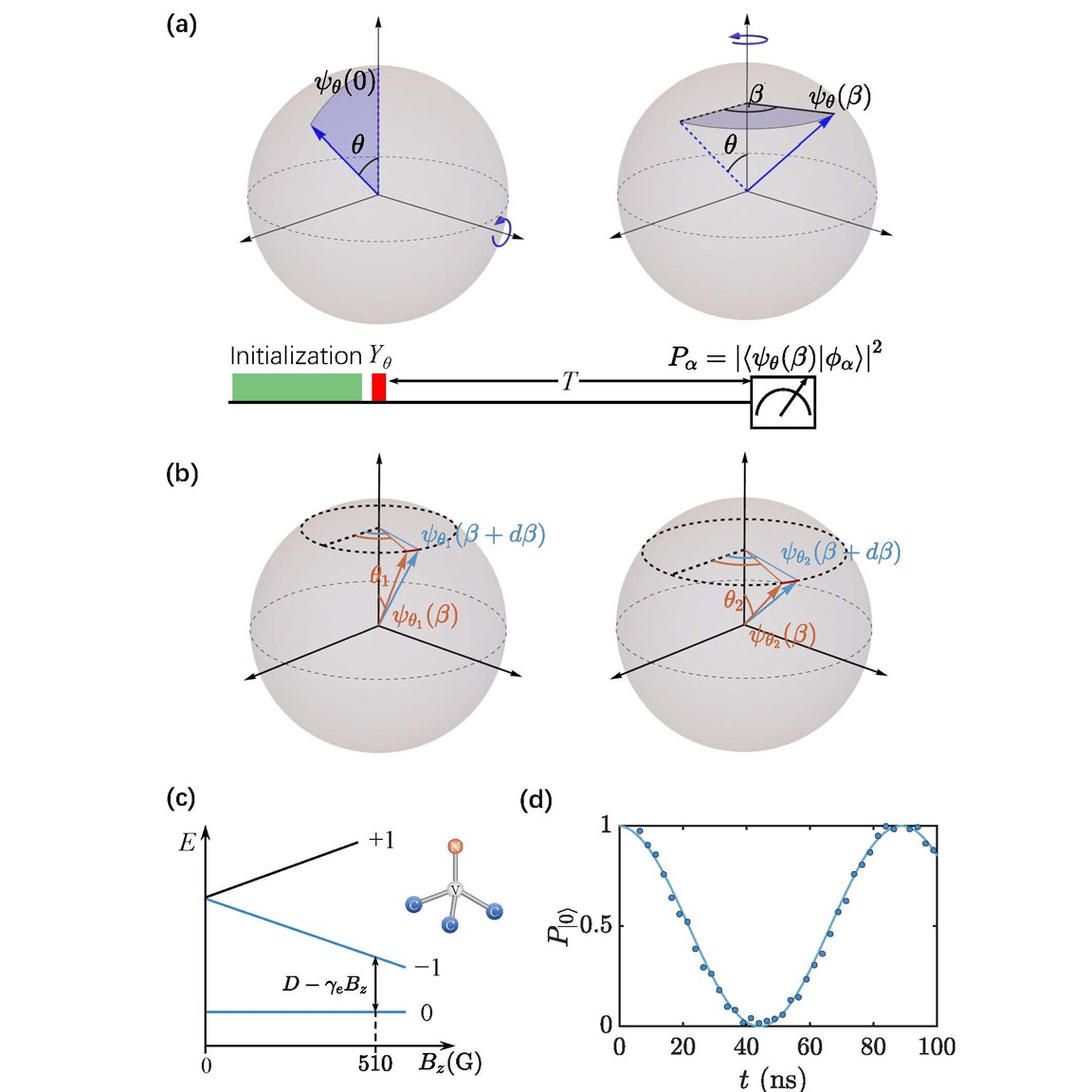
Min Yu, Yu Liu, Pengcheng Yang, Musang Gong, Qingyun Cao, Shaoliang Zhang, Haibin Liu, Markus Heyl, Tomoki Ozawa, Nathan Goldman and Jianming Cai
The quantum Cramér–Rao bound sets a fundamental limit on the accuracy of unbiased parameter estimation in quantum systems, relating the uncertainty in determining a parameter to the inverse of the quantum Fisher information. We experimentally demonstrate near saturation of the quantum Cramér–Rao bound in the phase estimation of a solid-state spin system, provided by a nitrogen-vacancy center in diamond. This is achieved by comparing the experimental uncertainty in phase estimation with an independent measurement of the related quantum Fisher information. The latter is independently extracted from coherent dynamical responses of the system under weak parametric modulations, without performing any quantum-state tomography. While optimal parameter estimation has already been observed for quantum devices involving a limited number of degrees of freedom, our method offers a versatile and powerful experimental tool to explore the Cramér–Rao bound and the quantum Fisher information in systems of higher complexity, as relevant for quantum technologies.
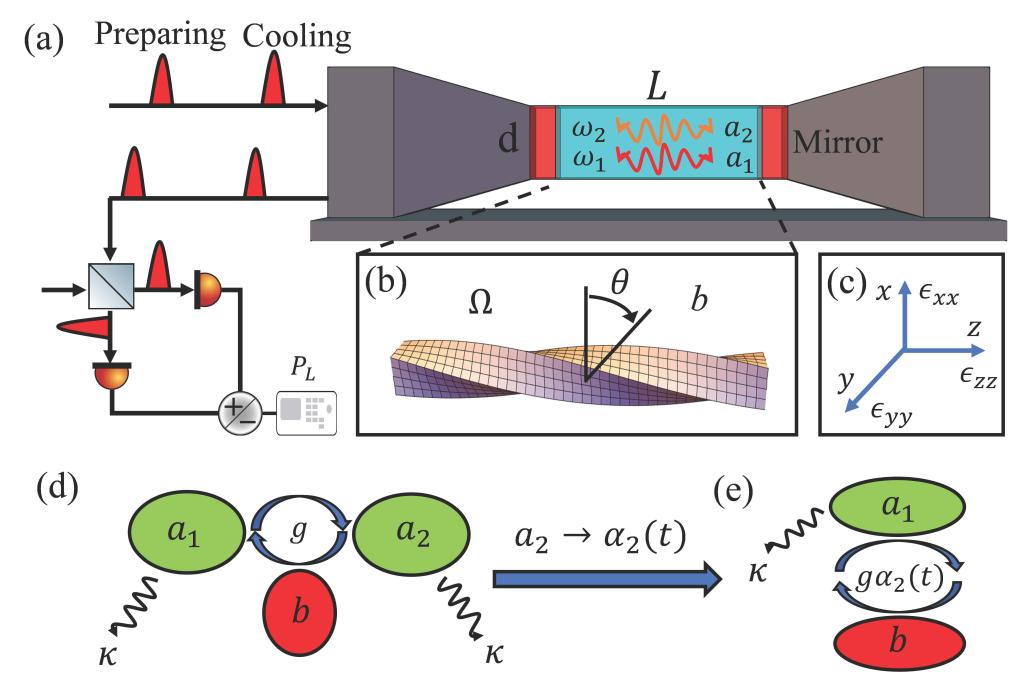
Yuan Liu, Yaoming Chu, Shaoliang Zhang, and Jianming Cai
Optomechanical systems offer unique opportunities to explore macroscopic quantum state and related fundamental problems in quantum mechanics. Here, we propose a quantum optomechanical system involving exchange interaction between spin angular momentum of light and a torsional oscillator. We demonstrate that this system allows coherent control of the torsional quantum state of a torsional oscillator on the single-photon level, which facilitates efficient cooling and squeezing of the torsional oscillator. Furthermore, the torsional oscillator with a macroscopic length scale can be prepared in Schrödinger catlike state. Our work provides a platform to verify the validity of quantum mechanics in macroscopic systems on the micrometer and even centimeter scale.
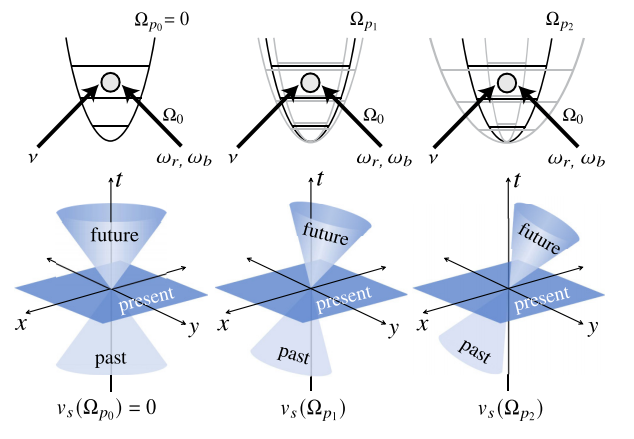
Qianqian Chen, Yaoming Chu, and Jianming Cai
Simulating quantum phenomena in extreme spacetimes in the laboratory represents a powerful approach to explore fundamental physics in the interplay of quantum mechanics, quantum field theory, and general relativity. Here we propose to simulate the movement of a Dirac particle propagating with a superluminal velocity caused by the emergent Alcubierre warp drive spacetime using trapped ions. We demonstrate that the platform allows for observing the tilted light cone that manifests as a superluminal velocity, which is in agreement with the prediction of general relativity. Furthermore, the Zitterbewegung effect arising from relativistic quantum mechanics persists with the superluminal propagation and is experimentally measurable. The present scheme can be extended to simulate the Dirac equation in other exotic curved spacetimes, thus providing a versatile tool to gain insights into the fundamental limit of these extreme spacetimes.
| |
版权所有 Copyright(C) 2018 华中科技大学量子传感与量子测量国际联合实验室